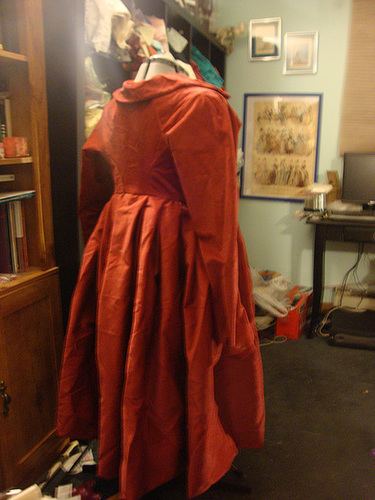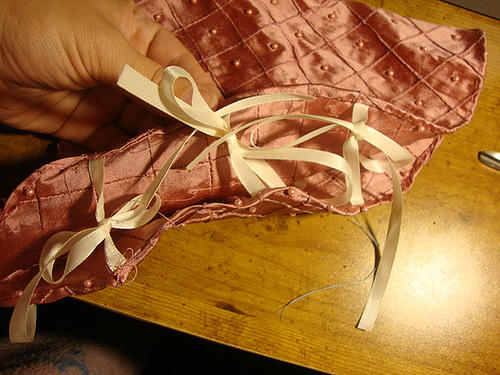From Two 15th Century Cookbooks:
Chare de Wardone. Take peer Wardons, and seth hem in wine or water; And then take hem vppe, and grinde hem in a morter, and drawe hem thorgh a streynoure with the licour; And put hem in a potte with Sugur, or elle3 with clarefiede hony and canell ynowe, And lete hem boile; And then take hit from the fire, And lete kele, and caste there-to rawe yolkes of eyren, til hit be thik, and caste thereto powder of ginger ynowe; And serue hit forth in maner of Ryse. And if hit be in lenton tyme, leve the yolkes of eyren, And lete the remnaunt boyle so longe, til it be so thikk as though hit were y-tempered with yolkes of eyren, in maner as A man setheth charge de quyns; And then serue hit forth in maner of Rys.
My not so great translation:
Heated Pears. Take pears, and seethe them in wine or water; and then take them up, grind them in a mortar, and draw them through a strainer with liquor; and put them in a pot with sugar, or else with clarified honey and cinnamon sticks, and let them boil; and then take it from the fire, and let it cool, and caste there in raw egg yolks, until it is thickened, and caste there in powdered ginger; and serve it in the manner of rice. And if it's Lent, leave out the egg yolks, and let it remain boiling so long that it will be as thick as though it was made with egg yolks, in the manner as a man seethes boiled quince; and then serve hit forth in the manner of rice.
Basically, according to this, just take the egg yolks out of the recipe and you are fine. The catch, of course, is that you can make it with either sugar or honey....and they may have went with the sugar during Lent.
And then I found this one:
Brewes in Lentyn. Take a fewe Fygys, and sethe hem and draw hem thorw a straynoure with Wyne; then putte ther-to a lytil Hony; then toste Brede, and Salte it; and so broune and rennyng as Brwes, serue hem in, and straw pouder Canelle y-now ther-on atte the dressoure, and serue it forth.
My bad translation:
Brew in Lent: take a few figs, and seeth them and draw them through a strainer with wine; then put in a little honey, then toast bread, and salt it, and so brown and running as brews, serve thme in, and add powdered cinnamon, and serve it forth.
Yay! Honey! In Lent! Granted, it's just a little honey but there is no mention of sugar, it clearly puts honey in use during Lent, and that's all I wanted. Yay!


















